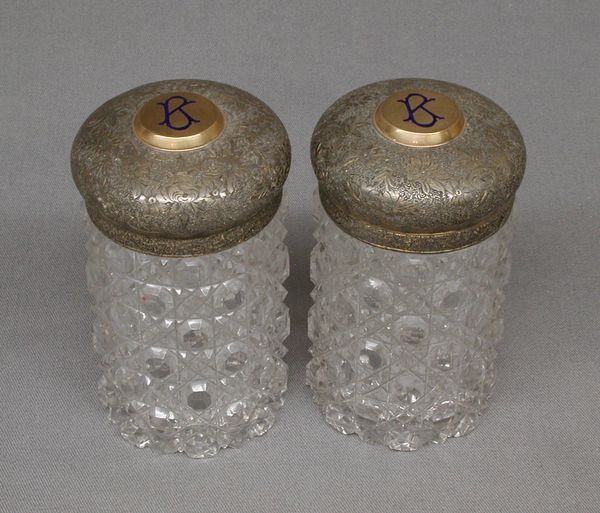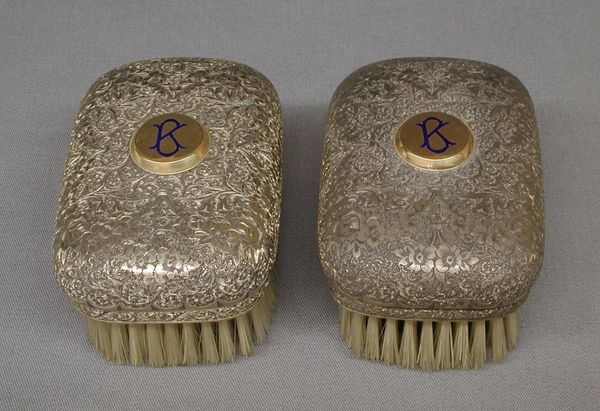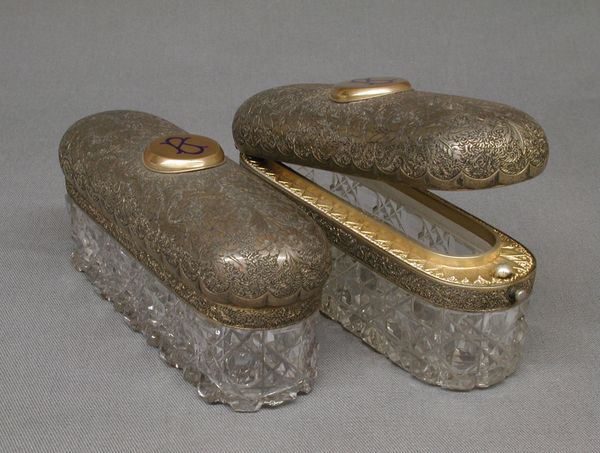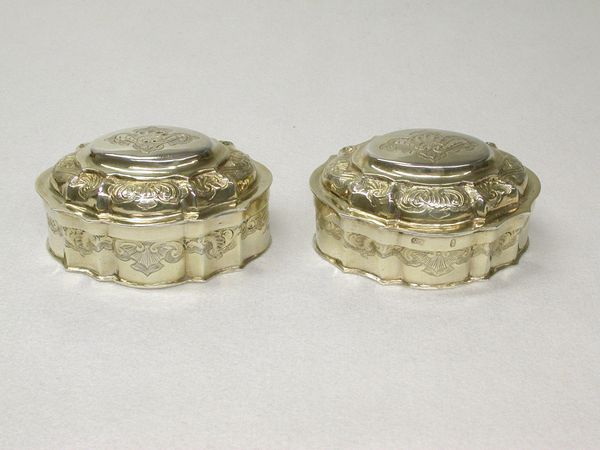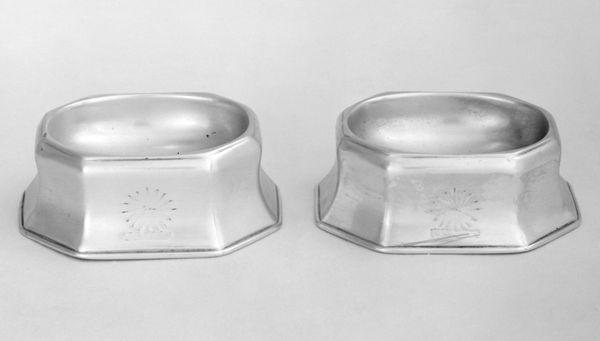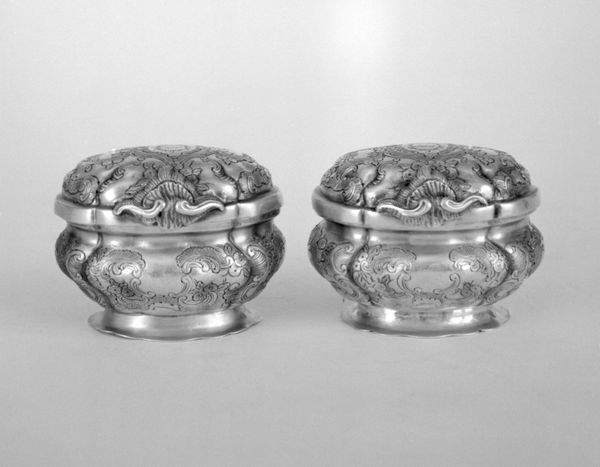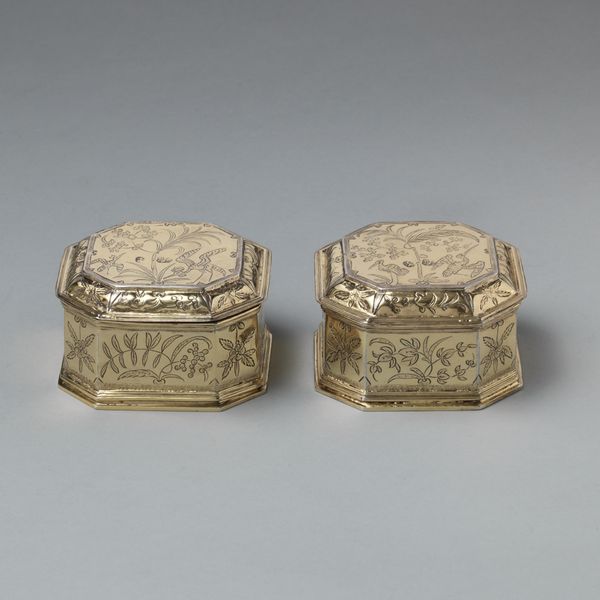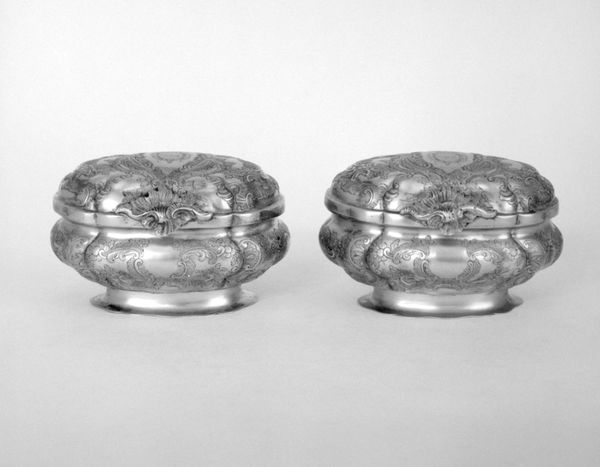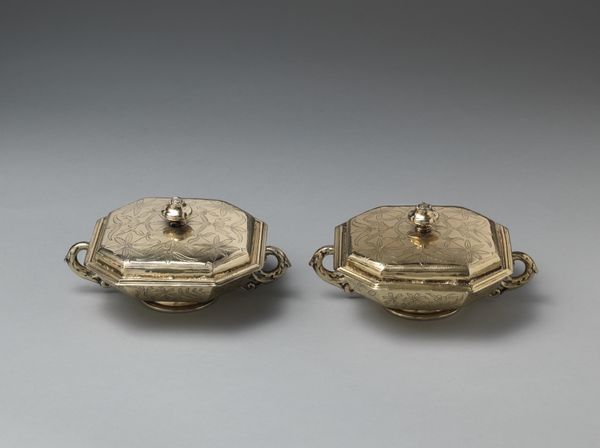
silver, metal, metalwork-silver, sculpture
#
silver
#
metal
#
metalwork-silver
#
sculpture
#
decorative-art
Dimensions: Overall: 2 1/2 x 2 1/2 x 2 1/2 in. (6.4 x 6.4 x 6.4 cm)
Copyright: Public Domain
Curator: Let's take a moment to consider these beautiful objects before us. What we're seeing is a pair of Cosmetic Jars, crafted by the Barnard Brothers between 1874 and 1875. They are currently housed here at the Metropolitan Museum of Art. The jars are fashioned from silver and metal, with ornate, decorative detail. Editor: They immediately strike me as luxurious, decadent even. The weight of that silver, coupled with the cut-glass bottoms... you can imagine these sitting on a vanity in a darkened room, reflecting candlelight. I feel an aura of Victorian opulence. Curator: Precisely. Consider the Victorian era and its complex relationship with ornamentation. These jars represent a specific kind of elevated femininity, literally containing elements related to appearance and ritual, reinforcing certain gendered expectations about beauty and self-presentation. How does this object affirm or challenge traditional views of women at the time? Editor: It's fascinating that you point that out. On one level, these jars, likely part of a set, catered to a very particular elite. Yet, I also wonder if the level of craft suggests a quiet defiance of industrialisation. Curator: Absolutely, but consider the cultural moment. The rapid industrialization demanded the skills to manipulate new materials but also the skills to preserve historical techniques and decorative practices that affirmed and reproduced existing class structures and inequalities. And the “B” engraved into the center— whose initials do they represent? What did owning these cosmetic jars symbolize within Victorian society's complex system of etiquette and social stratification? Editor: Good questions. They provide entry points for thinking about identity, status, and personal expression. By whom and how was that “B” displayed, I wonder, and what forms of value – financial, symbolic – would it take at this historical conjuncture? I keep returning to the contrast between the delicacy of the silverwork and the mass-produced quality of the glass bases – so Victorian! Curator: That dichotomy really captures a key tension in that era. It prompts us to investigate who had access to these goods and what role decorative art played in the shaping of Victorian identities. Thanks for sharing your observations. Editor: My pleasure. There's definitely a tension here between artistic expression, cultural context, and perhaps even personal politics of the time that is really worth excavating.
Comments
No comments
Be the first to comment and join the conversation on the ultimate creative platform.

